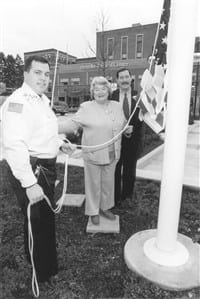It’s RSV Season Parents Must Recognize — and Manage — the Many Symptoms
The highly contagious virus known as respiratory syncytial virus, most often referred to as RSV, which is prevalent during the winter months, has already arrived in the local community.
RSV is the most common cause of bronchiolitis and pneumonia in children under 1 year of age.
The CDC reports that, each year, some 75,000 to 125,000 children in the youngest age group are hospitalized with the infection. Almost all children are infected with the virus by their second birthday. RSV can also affect older children, teenagers, and adults, especially those with compromised immune systems and others who are 65 and older. However, parents should not be overly alarmed because only a small percentage of youngsters develop the severe disease and require hospitalization.
Symptoms of RSV mirror the common cold — a runny nose, nasal congestion, and fever. Some children may also wheeze. And there is no antibiotic for the virus, which, like a cold, must run its course. For some infants and children who are at high risk, there is a drug called palivizumab to help prevent severe illness. However, the medication does not prevent RSV, and it cannot cure or be used to treat those already suffering from its severe effects. The best advice as we enter the RSV season is to talk with your child’s pediatrician to identify whether he or she is at high risk and if palivizumab is an option to prevent severe illness.
For those children with RSV, it’s simply a matter of symptom management — making sure your child is hydrated and drinking well, his or her fever is under control, and they’re not having any trouble breathing.
Because RSV can cause serious illness in some youngsters and it is so widespread, some doctors consider it to be the most significant childhood infection of the respiratory system. Many are hospitalized with severe breathing problems or trouble feeding and drinking. In many cases, hospitalization lasts only a few days, and recovery usually occurs in about one to two weeks.
RSV can be spread when an infected person coughs or sneezes, sending virus-containing droplets into the air, where they can infect a person who inhales them. Infection can also result from hand-to-nose, hand-to-mouth, and hand-to-eye contact. People with RSV are normally contagious anywhere from three to eight days.
Infants and young children most at risk for severe RSV infection include those with a history of prematurity, infants less than 6 weeks of age, those with congenital heart disease and chronic lung conditions, and those who suffer from immunodeficiency, such as HIV, AIDS, cancer, and transplant patients.
The American Academy of Pediatrics recommends taking the following important steps to prevent exposure to RSV and other viruses, especially in the first few months of your child’s life:
- Make sure everyone washes their hands before touching your baby;
- Keep your baby away from anyone who has a cold, fever, or runny nose;
- Keep your baby away from crowded areas (shopping malls, movie theaters, restaurants, etc.);
- Keep your baby away from tobacco smoke; and
- For high-risk infants, participation in child care should be restricted during RSV season whenever possible.
The good news is that most infants and children overcome RSV infections, which are often asymptomatic and go unnoticed.
Dr. Matthew Sadof is a pediatrician at Baystate High Street Health Center/Pediatrics and Baystate Children’s Hospital.


Comments are closed.